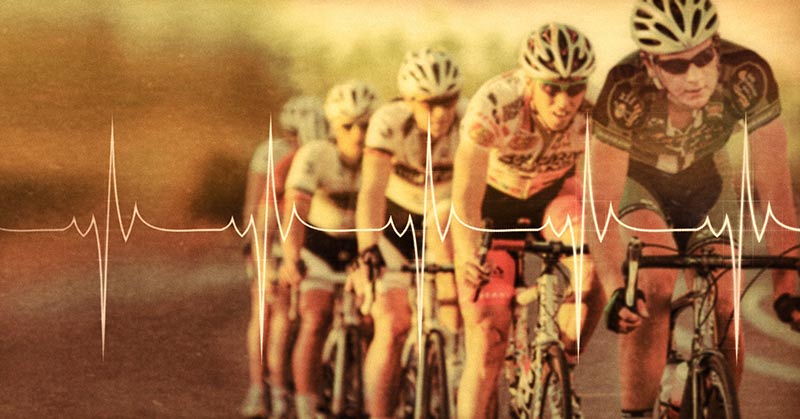
Heart rate variability (HRV) is an important marker of an individual’s physiological stress level. Due to recent technological improvements in terms of computation power and accessibility to high-quality wearable technology we are seeing all sorts of applications making use of HRV today, from optimizing performance in sports, to monitoring psychological stress in the workspace, to quantifying meditation or better understanding chronic disease.
While HRV is a powerful tool and can be very helpful in better understanding physiological responses to both acute and chronic stressors, interpreting HRV data at the individual level is still challenging.
This post focuses on HRV in the context of monitoring training load and optimizing performance. In particular, I will go over the following:
- Best practices for short, practical measurements of HRV
- Day to day variability in response to training: acute HRV changes
- Understanding the big picture: multi-parameter trends
As best practices, I’ll cover the main methods each athlete or sports enthusiast should use to make sure the acquired data is reliable and can be used to help the decision-making process. This is mainly accounted for by taking care of being consistent during the measurements (body position, time of the day, paced breathing).
Once we have reliable data, HRV is typically analyzed in two ways; acute HRV changes and long-term trends. Acute changes refer to the easiest interpretation, i.e. on a day following intense training HRV is expected to drop. This is the principle on which most HRV apps, like HRV4Training, rely on to provide users with daily advice. While many factors can impact HRV on a daily basis, it is easier to analyze the impact of training on the following day’s HRV, compared to long-term trend analysis where more factors might be playing a role.
Higher HRV does not necessarily mean better condition and fitness. Share on XIn the context of understanding the big picture over the longer term, higher HRV does not necessarily mean better condition and fitness. HRV is a bit more complex. Thus, I will cover more explorative work that looks a multiple parameters to better grasp the full picture of physical condition (HRV baseline, or moving averages, as well as HRV variations, together with heart rate, normalized HRV, training load, and other relevant variables), and try to discriminate between periods of good adaptation to training, maladaptation, overtraining, and accumulating fatigue.
Best practices: what you should do to make sure your HRV data is meaningful
Technology
Up to a few years ago, HRV was used mainly by elite athletes and coaches or academic researchers working at the intersection of sports, health and medicine. Many of these experts were able to show links between HRV and performance as well as recovery or training load.
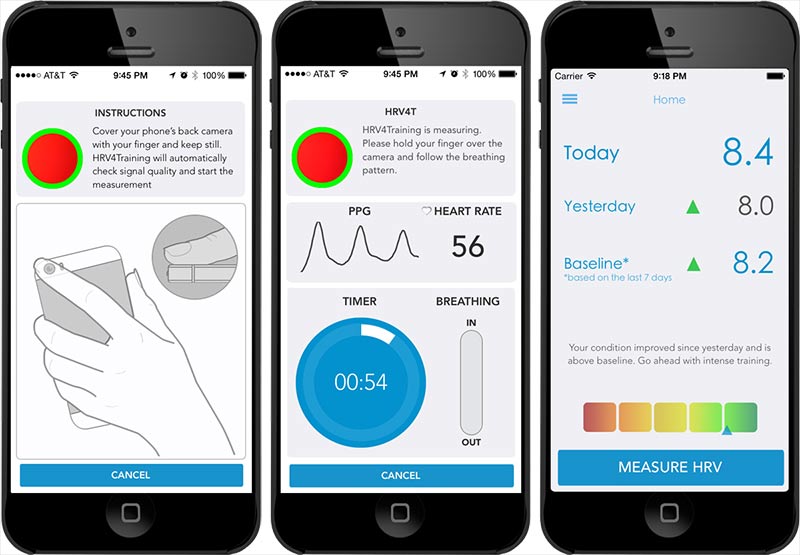
Figure 1. iPhone screen shots of the HRV4Training Application.
However, in the recent past many new, affordable and user-friendly tools have been developed. These tools typically rely on commercially available heart rate monitors (e.g. a Polar chest strap) to analyze data, compute HRV and provide guidance to the user (see for example ithlete, a clinically validated tool, or Elite HRV). Most of these apps rely on spot measurements of about 1 minute, while other tools provide more complex 24/7 solutions, like firstbeat.
The latest developments go even a step further in terms of usability and accessibility. With apps like HRV4Training, HRV can be computed accurately without the need for any external sensor or device. The main advantage is the increased compliance and reduced cost.
HRV4Training uses the phone camera to extract photoplethysmography (PPG, basically blood flow from the finger) and then determine markers of the autonomous nervous system activity, in particular, parasympathetic activity. PPG has been used for a long time in clinical settings and has been validated multiple times, proving to be a reliable measurement of HRV, as good as standard electrocardiograms with sticky gel electrodes [1, 2, 3]. Other apps also rely on PPG but using external sensors like ithlete’s finger sensor, which has been recently clinically validated by Flatt and Esco [4].
Regardless of the tool you decide to use, make sure the technology is reliable. For example, there are many optical watches out there, but almost all of them as of 2015 can only provide reliable HR, and not HRV, due to much averaging performed to stabilize the signal (check out this post for details).
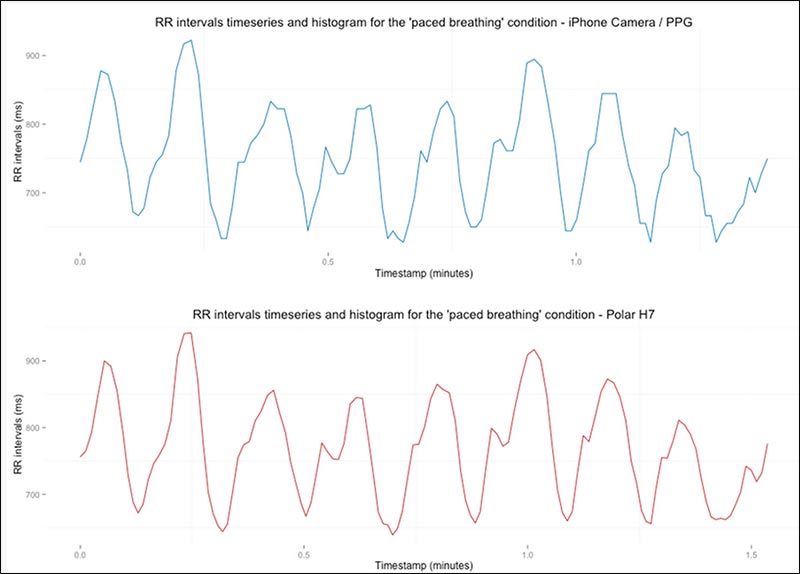
Figure 2. Comparison between RR intervals extracted from a chest-worn Polar H7 sensor and the iPhone Camera using the signal processing techniques implemented in HRV4Training. The data was collected during a paced breathing exercise. Increases and decreases in RR interval values due to inhaling and exhaling are clearly visible in both traces.
From Data to Insights
By quantifying parasympathetic activity, HRV apps are able to translate the information into an assessment of training load and provide actionable insights on physical condition, helping users to better understand how their body responds to trainings and other important factors in life (e.g. sleep, stress, etc.) [5, 6, 7, 8].
However, taking advantage of the data is not that simple. We need to take care of a few extra steps to make sure the information we are collecting is reliable.
Clinical studies were carried out under very specific, strict, laboratory conditions. Typically, this meant showing up at a lab early in the morning, measuring 2 hours after a light breakfast and at rest, a pre-measurement period including up to 30 minutes lying down in the lab, and so. Even with the right tools, HRV can be difficult to gather under similar conditions when measured in the wild, and these difficulties can make interpretation harder.
Additionally, research showed that many factors influence HRV, from body posture to respiration, age, genetics, gender, physical exercise, chronic health conditions and more. So how can we get reliable insights from HRV data, if it is affected by so many factors?
Get your Baseline
We do so in two ways. First, we need to look only at measurements with respect to ourselves, which means we need to collect a baseline, or a series of recordings so that the effect of different stressors is always evaluated with respect to what are our normal values, without looking much at the general population.
Secondly, we also need to control for as many of the previous factors as we can, and then evaluate the effect of what we care about. For example, in the context of optimizing performance, apps like HRV4Training provide a set of simple rules (or best practices) so that the measurements your take at home are as close as possible to supervised laboratory recordings, and your data is more reliable.
Best Practices
Here are a few best practices for short HRV measurements that are very important to follow to get consistent results that can be interpreted correctly:
Measurement Time and Context
Take the measurement first thing after waking up, possibly while still in bed. This way you have consistent time of the day, and you are not affected by other stressors. A good exception is if you need to empty the bladder, in that case, do it, then go back, rest 1 or 2 minutes to make sure your body is not affected by physical activity, and then take the measurement. When you take the measurement, it’s very important to try to relax, and not to think about other factors that might be stressing you out, like what’s coming up during the day. Never read your email before the measurement!
Measurement Duration
Short, 60 seconds measurements have been validated multiple times [9], and you can trust a 60 seconds recording for rMSSD (time domain feature, more time is required for low-frequency analysis). You can see an example in the figure below.
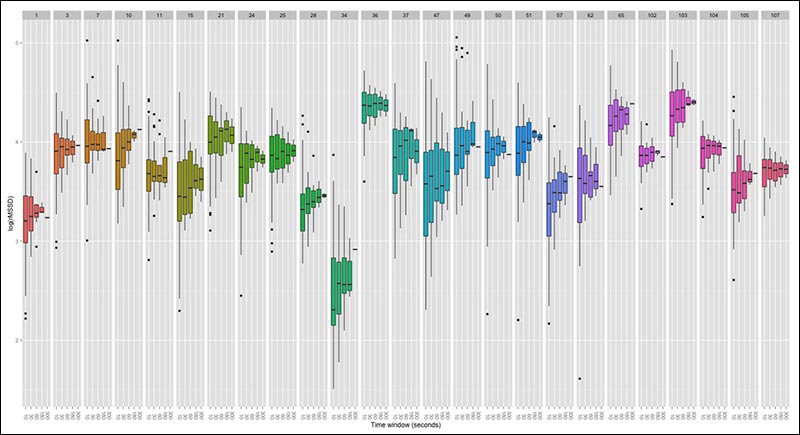
Figure 3. rMSSD for 25 participants computed on windows between 10 seconds and 5 minutes.
Still, if you have the time and patience, longer measurements can provide a more stable condition and be less affected by artifacts. We can see from the plot above that even 10 seconds measurements have the same median value we have with 5 minutes measurements. However there is much variability between the values obtained overt 10 seconds and, therefore, longer windows provide better reliability and repeatability. 60 seconds is something the community seems to have settled for, as a good compromise between accuracy and practical applicability of the test for a consumer application.
Breathing is Key
According to literature, HRV features do not seem to be particularly affected by paced breathing, if we consider shallow breathing rates (> 10) or spontaneous breathing. However, baseline HRV (rMSSD) seems to be affected by breathing rate at the individual level, with higher HRV values corresponding to lower breathing rates (deep breathing).
Thus, paced breathing can be a simple way to stay focused on the measurement and limit other stressors. Measurement to measurement repeatability at constant breathing rates is good, even though there will always be differences between consecutive HRV measurements. These differences are typically lower than the differences due to changing breathing rate. As a suggestion for your measurements, I would advise using paced breathing at a breathing rate that is comfortable for you, i.e. not too fast or too slow, and stick to that for all your measurements. In general, it doesn’t matter what breathing frequency you pick, but be consistent, use the same every time.
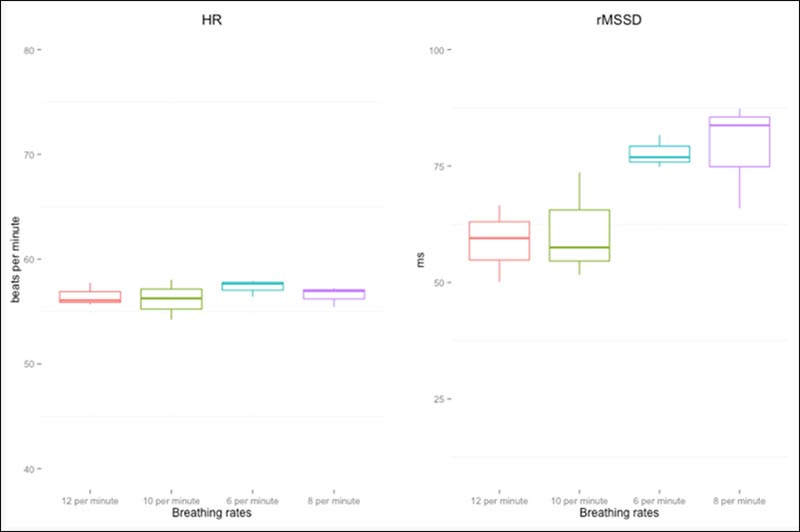
Figure 4. Heart rate and rMSSD for different breathing rates measured during paced breathing for one participant. Shallow breathing shows lower rMSSD values (12 and 10 breaths per minute), compared to deep breathing (8 and 6 breaths per minute).
Body position
Lying, sitting or standing are all good positions, again what matters is consistency. For elite athletes, typically sitting or standing is preferable, to avoid saturation effects that can happen while lying down in individuals with extremely low heart rates. However, if you decide to stand, it’s very important to be patient, and wait a minute or two before starting the measurement, since your body needs to be at complete rest and measuring too early after standing up might cause the measurement to be affected.
Most apps make following best practices easy for you by providing 50 to 60 seconds measurements with paced breathing and suggesting a morning measurement as part of your routine:
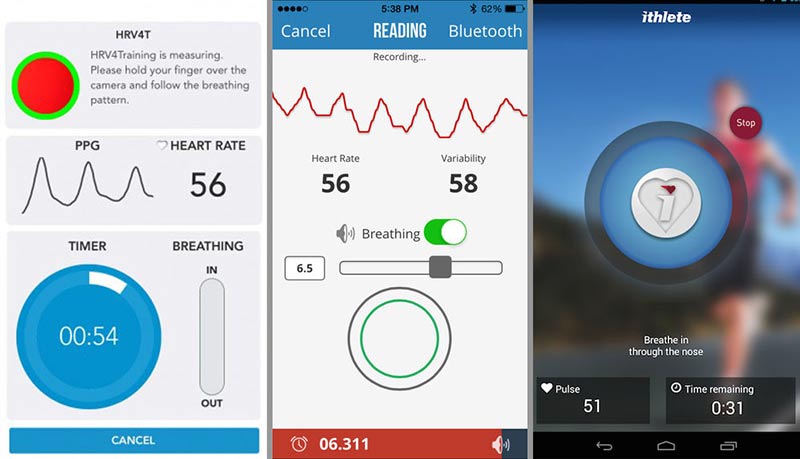
Figure 5. HRV4Training, Elite HRV and ithlete are all providing guidance for measurement time of the day, duration and paced breathing, simplifying acquisition of consistent data.
Day to day variability in response to training: acute HRV changes
As mentioned above, once reliable, consistent HRV data is acquired, we typically analyzed it in two ways; acute HRV changes and long-term trends.
Simply put, monitoring parasympathetic activity via HRV can provide insights on physiological stress, with a higher level of stress resulting in lower HRV. For example, heavy training is responsible for shifting the cardiac autonomic balance toward a predominance of the sympathetic over the parasympathetic drive. This means that heavy training will typically reduce HRV as measured by common HRV tools (typically reporting rMSSD, a measure of parasympathetic activity, or a transformation of rMSSD on a scale between 0-10 or 0-100). Acute HRV changes refer to interpretations relying on this principle, i.e. on a day following intense training HRV is expected to drop.
Day to day HRV guidance based on acute HRV changes is very useful to make small changes to our overall training plan. If today we are down, we can easily adapt and move our intense training by a day, or make some other small adjustments.
Below is an example of this kind of analysis for my own data. The colors are the manual annotations in the HRV4Training app. In the top plot, we can see the rMSSD value each day and how I trained in terms of intensity. The bottom plot is the more interesting one. I shifted the labels. Therefore they don’t represent anymore how I trained that day, but how I trained the day before. This way we can see quickly the effect of training on HRV. For example, looking at the red bars in the bottom plot we see that HRV had a drop after intense trainings 5 times out of 6 annotated intense trainings. Average trainings, highlighted in orange, also are predominantly showing negative differences, i.e. a drop in HRV.
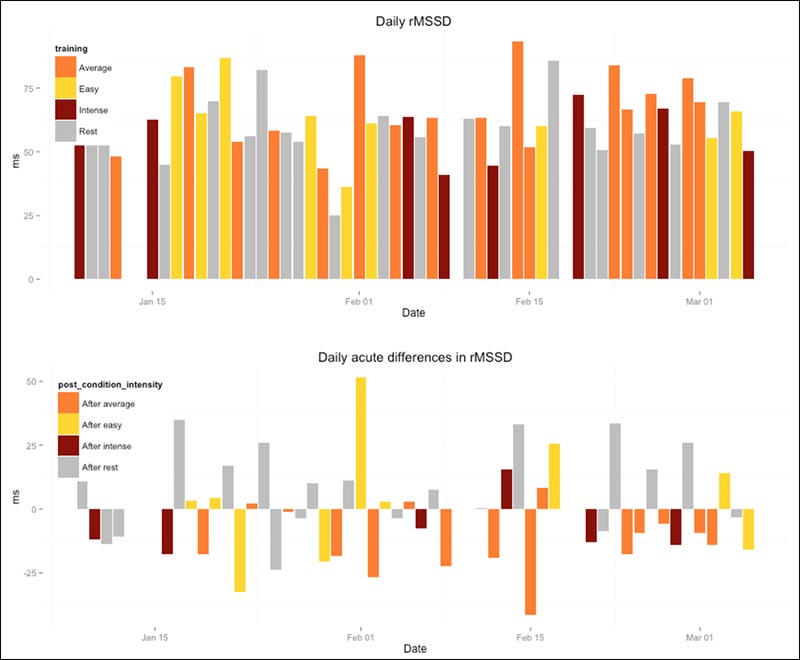
Figure 6. Example of day to day variability in rMSSD with respect to training intensity.
In the figure below, we can see the change in rMSSD the day after training (daily acute differences shown above). As “training condition” I included training at average and intense intensities, since easy trainings or recovery runs can have the opposite effect on HRV (i.e. HRV increase after easy training due to a stimulatory effect on parasympathetic activity). We can see the yellow distribution, representing rMSSD changes after average or intense trainings, being consistently below zero, meaning that rMSSD is typically reduced after training, and can be used as a measure of training load.
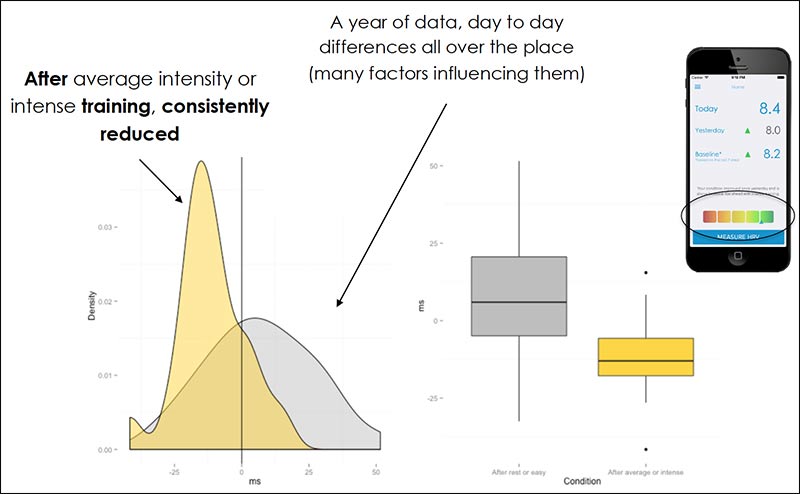
Figure 7. Effect of training on day to day rMSSD changes.
By looking at acute HRV changes longitudinally over weeks or months, we can get some better understanding of how we cope with trainings of different intensities.
HRV4Training provides new experimental features that do this analysis for you, when enough data is acquired:
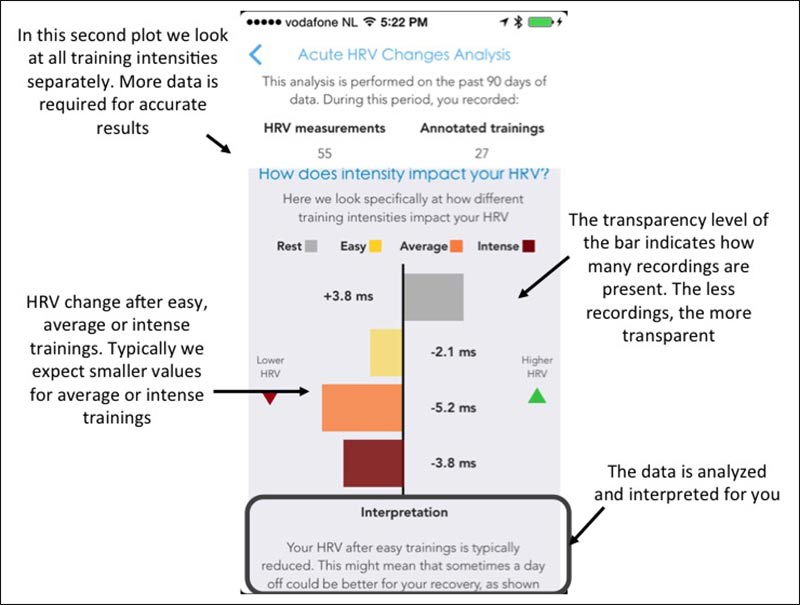
Figure 8. Acute HRV changes automatically analyzed in HRV4Training.
Understanding the Big Picture: Multi-parameter Trends
While it is definitely interesting to look at HRV on a day to day variability basis and understand the impact of intense training sessions, much research is now trying to use this data to understand more about our overall condition over longer periods of time, weeks to months, in the context of a training program [10, 11, 12].
Questions we can try to answer are: How are we adapting to a new training plan? Is our physiological condition optimal while approaching a race or should we change something? Are we at risk of overtraining or accumulating fatigue?
From recent research, it is clear that HRV alone as traditionally analyzed cannot answer all these questions. When we look at HRV over longer periods of time, the common rule, which is higher HRV equals better condition, does not necessarily hold anymore.
However, by combining a series of physiological parameters and methods, we can learn more about our physical condition.
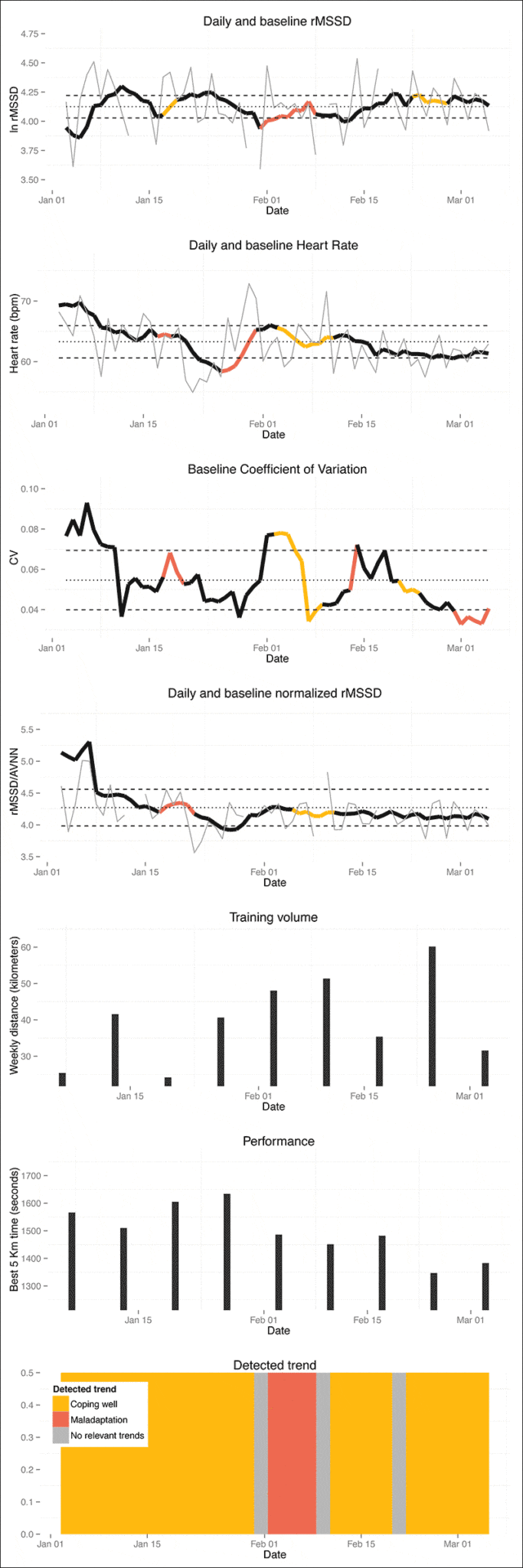
Figure 9. Daily and Baseline HRV.
By looking together at changes in baseline HRV (meaning our weekly averages over time) as well as looking at the variability within our HRV scores (for example, if our readings are jumping around a lot during a week or are pretty much the same score every day) together with information about heart rate and of course our current training program (meaning training load, intensity, and so on) there are some consistent patterns that we can identify.
For example, research showed that lower variability between readings together with a stable or increasing HRV baseline can be more representative of good adaptation to training while the same reduction in variability between readings when associated with higher HR and lower HRV baseline is more representative of fatigue.
So in this context looking at multiple parameters can help better understand what is going on and tools like HRV4Training are constantly evolving to bring this analysis in the app and do the math for you, so that you can use the information to further optimize your trainings.
Conclusion
HRV analysis is a great tool to monitor training load and adaptations to a training program. However, it’s very important to keep in mind that data should be collected under consistent conditions, in order to be reliable and meaningful during interpretation.
Analysis of acute HRV changes can be particularly useful in making day to day adaptations to a training plan, and understand how we are responding to different types of training. However, in order to look at the bigger picture a multi-parameter approach is necessary, since when we look at HRV over longer periods of time, the common rule, which is higher HRV equals better condition, does not necessarily hold anymore.
Much of the work on multi-parameter trends was carried out during the very recent past and is a very active area of research. Thus, we are likely to see more research in the next few years combining not only multi-parameter physiological data, but also subjective scores (how an athlete is feeling) as well as other relevant metrics (e.g. sleep quality), and data analytics tools able to combine these parameters and provide athletes and coaches with more insights to aid the decision making process.
For questions, inquiries, and feedback about HRV, contact me on Twitter at @marco_alt or visit my blog at HRV4Training.
Please share so others may benefit.
[mashshare]References
- Russoniello, C. V., et al. “A measurement of electrocardiography and photoplethesmography in obese children.” Applied Psychophysiology and Biofeedback 35.3 (2010): 257-259.
- Lu, Sheng, et al. “Can photoplethysmography variability serve as an alternative approach to obtain heart rate variability information?.” Journal of Clinical Monitoring and Computing 22.1 (2008): 23-29.
- HRV4Training Blog: Heart rate variability using the phone’s camera
- Flatt, Andrew A., and Michael R. Esco. “Validity of the ithleteTM smart phone application for determining ultra-short-term heart rate variability.” Journal of Human Kinetics 39, no. 1 (2013): 85-92.
- Garet, Martin, et al. “Individual interdependence between nocturnal ANS activity and performance in swimmers.” Medicine and science in sports and exercise 36 (2004): 2112-2118.
- Pichot, Vincent, et al. “Relation between heart rate variability and training load in middle-distance runners.” Medicine and science in sports and exercise 32.10 (2000): 1729-1736.
- Kiviniemi, Antti M., et al. “Endurance training guided individually by daily heart rate variability measurements.” European journal of applied physiology 101.6 (2007): 743-751
- Myllymäki, Tero, et al. “Effects of exercise intensity and duration on nocturnal heart rate variability and sleep quality.” European journal of applied physiology112.3 (2012): 801-809
- Esco, Michael R., and Andrew A. Flatt. “Ultra-short-term heart rate variability indexes at rest and post-exercise in athletes: evaluating the agreement with accepted recommendations.” Journal of sports science & medicine 13, no. 3 (2014): 535.
- Plews, D. J., Laursen, P. B., Kilding, A. E., & Buchheit, M. (2012). Heart rate variability in elite triathletes, is variation in variability the key to effective training? A case comparison. European journal of applied physiology, 112(11), 3729-3741.
- Stanley, Jamie, Shaun D’Auria, and Martin Buchheit. “Cardiac Parasympathetic Activity and Race Performance: An Elite Triathlete Case Study.” IJSPP 10.4 (2015).
- Buchheit, M. (2014). Monitoring training status with HR measures: do all roads lead to Rome?. Frontiers in physiology, 5. Chicago.

